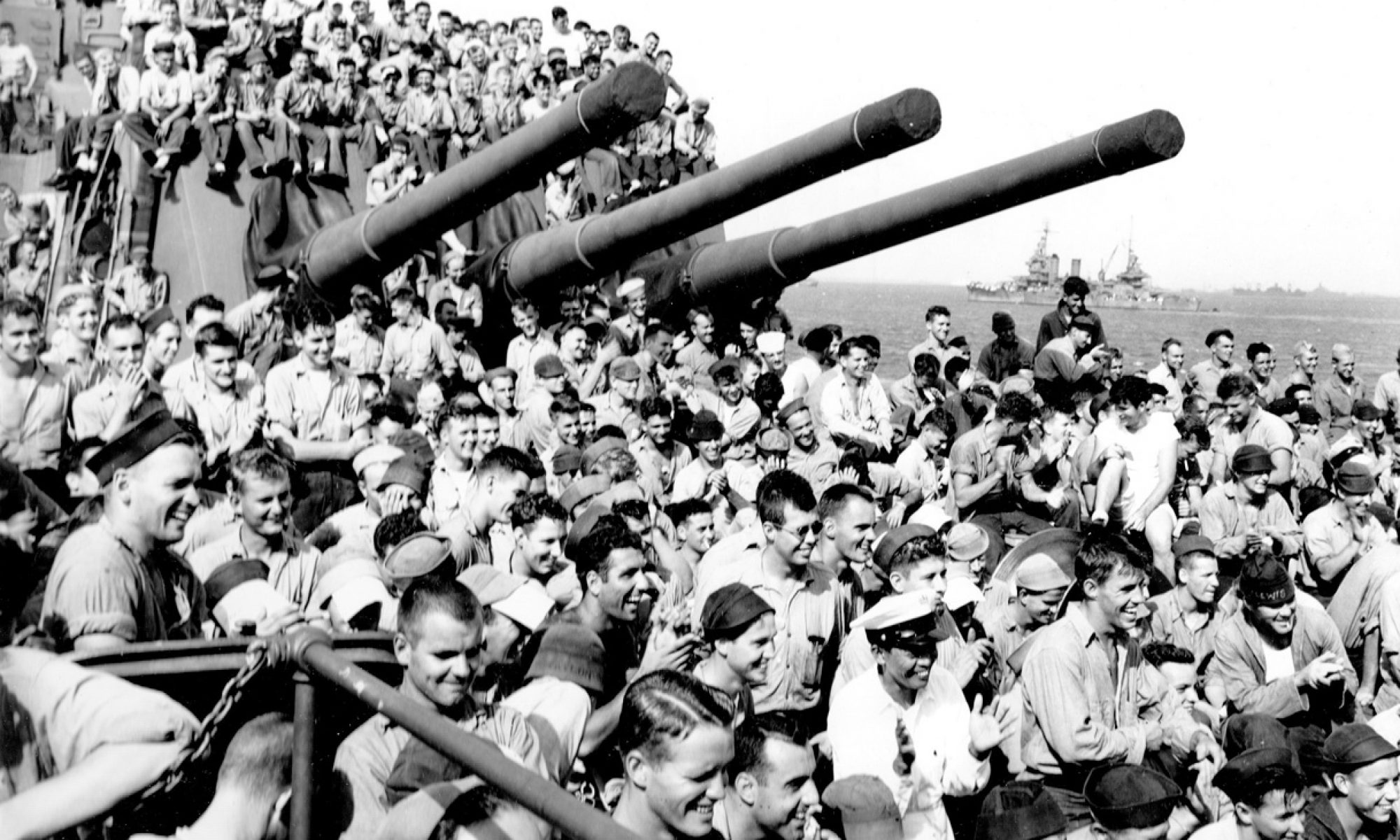As I mentioned in my last post, the tiny island of Iwo Jima was very important to both sides in the War for the Pacific. The Boston set sail for the Bonin and Volcano Islands four times between mid-June of 1944 and Feb/March of 1945.
In the lead-up to the First Battle of the Philippine Sea (June 19-21, 1944), Boston’s Task Group 58.1 (Adm. Clark) was joined by TG 58.4 (Adm. Harrill) in a two-day raid against airfields on those islands – with emphasis on the planes on Iwo Jima. Despite typhoon conditions, deckloads of fighter and bombers took off from the carriers and inflicted major damage on enemy aircraft on the ground (91 planes) and in the air. The raids (June 15 and 16) severely damaged Japanese operational plans during their attacks on the American Invasion Fleet massed off the west coast of the Mariana Islands a few days later.
The actions of the Battle of the Philippine Sea found the ships of Task Force 58 searching for downed airmen in the seas north and east of the Marianas on June 22. Next day, the ships were on their way for resupply and replenishment at Eniwetok (Marshall Islands), with a scheduled raid on the Marianas on the way (a typical WWll “drive-by shooting”) On June 24, raids launched by the carriers of TG58.1 destroyed 66 more planes on the airfields of Iwo. In dogfights over Iwo and Chichi Jima, Navy pilots destroyed 59 planes in the air (and 24 more on the ground.)
The Boston’s next visit to Iwo Jima was July 4 and 5th. As the flagship of Cruiser Divison 10, CA-69 lead a task group of five cruisers and 15 destroyers in bombardments of airfields and military installations on Iwo Jima. With the combined carrier plane strikes and ship’s bombings, the day netted 116 planes on the ground, five enemy ships sunk and several heavily damaged.
After spending the entire month of July in combat (Operation Forager) off various Mariana Islands, Task Force 58 headed back for resupply to Eniwetok. On the way, Jocko Clark’s task group broke north for another two day raid on Iwo, including another cruiser bombardment lead by CruDiv10 on August 4 and 5th.
Boston’s next visit to Iwo was in mid February 1945, when the Combined Fifth Fleet (Task Force 58 and the Invasion Fleet) sailed north from Ulithi for the start of Operation Detachment — the amphibious assault of Iwo Jima.
